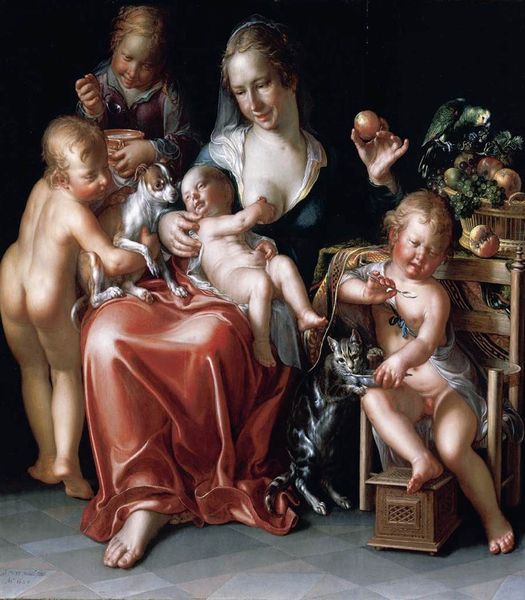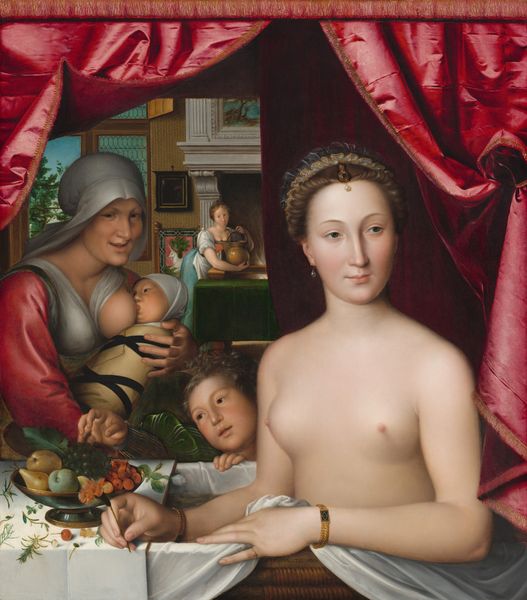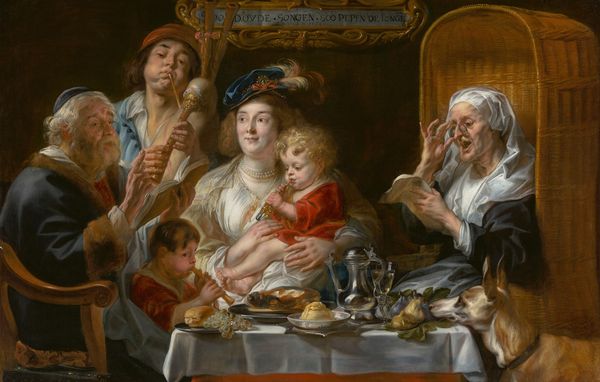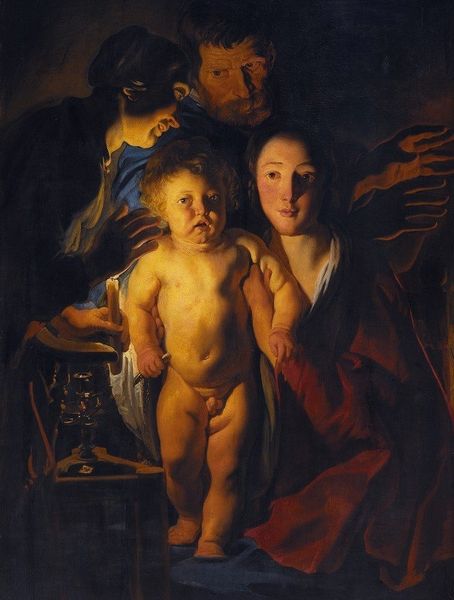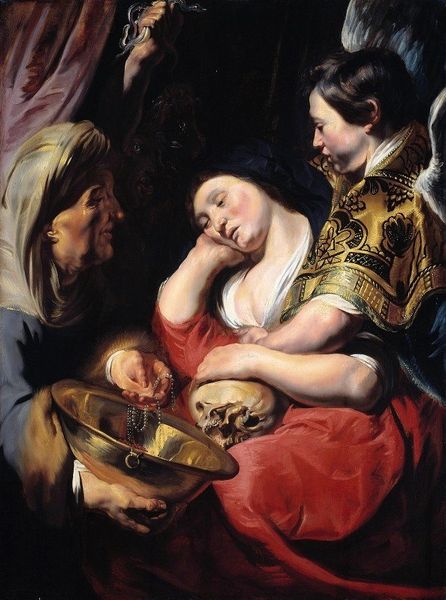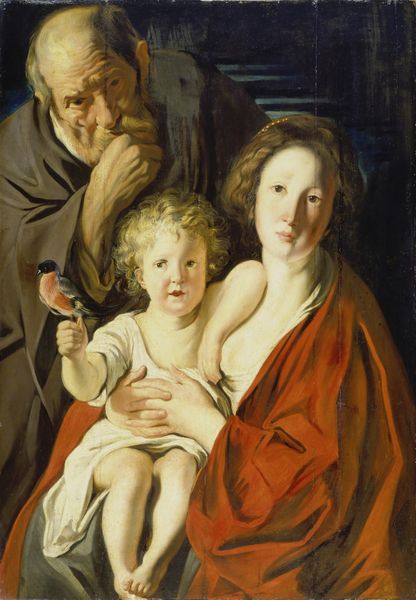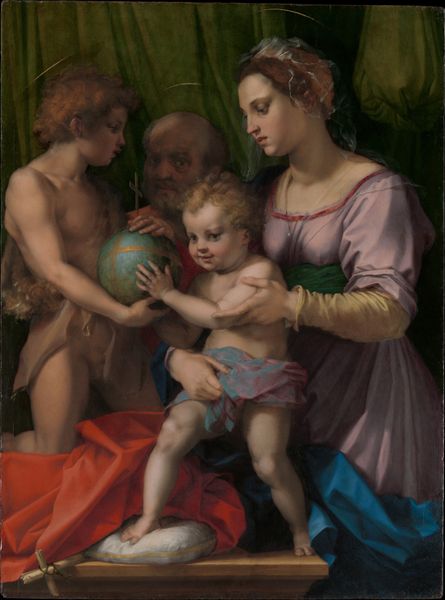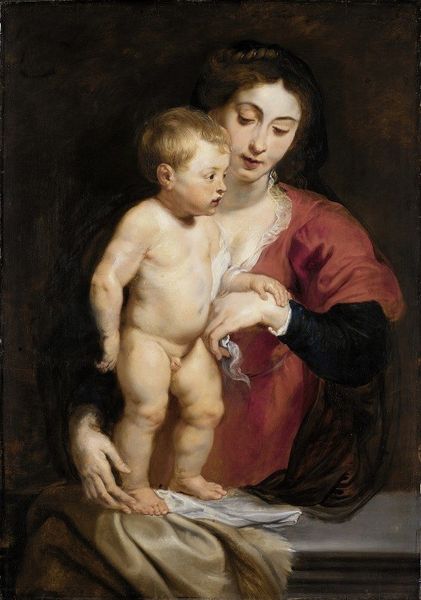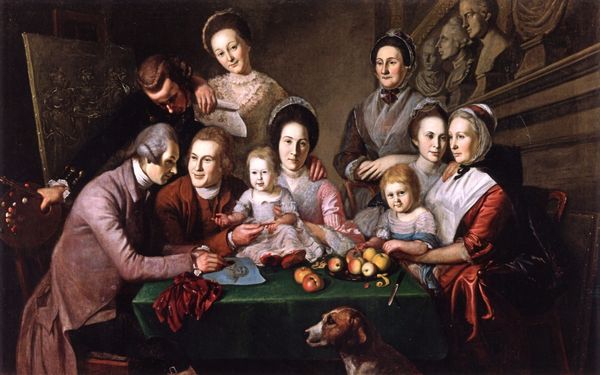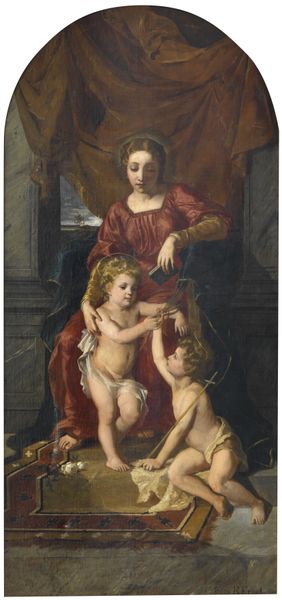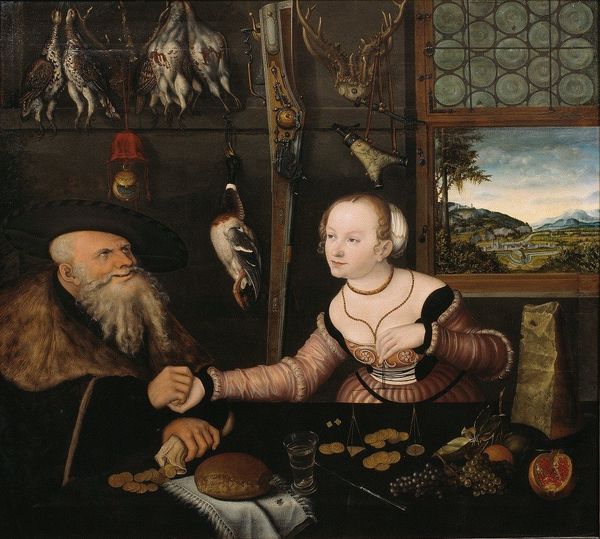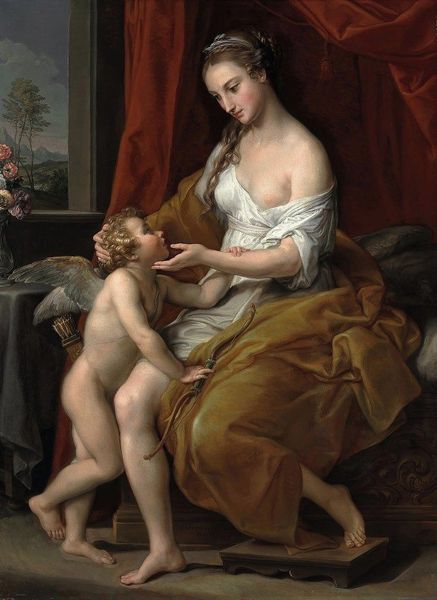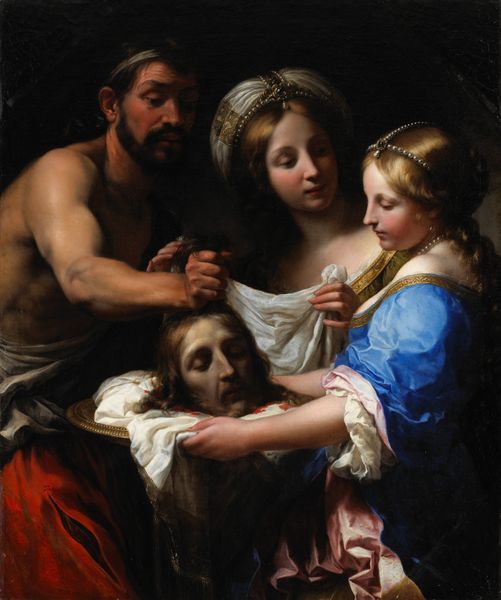
painting, oil-paint
#
portrait
#
baroque
#
painting
#
oil-paint
#
figuration
#
oil painting
#
animal portrait
#
genre-painting
#
history-painting
#
surrealist
#
italian-renaissance
#
nude
#
portrait art
Copyright: Public domain
Editor: So here we have Alessandro Allori's "Rest on the Flight to Egypt," painted in 1602. The use of oil paint gives a striking luminosity, and what really grabs me is how posed and deliberate the figures feel, even within this supposedly candid scene. How do you interpret this work? Curator: I see this work as a window into the complexities of religious and political power structures during the Italian Renaissance. Consider how Allori, as a court artist, would have been deeply enmeshed in the Medici's patronage system. It begs the question, to whom does this "rest" truly cater? Is it a genuine moment of respite, or a carefully constructed image to reinforce dominant ideologies? Editor: That's fascinating. I hadn't considered the potential tension between genuine faith and political messaging. The nude Christ Child seemed naturalistic, but is it a vehicle for a message about purity or divinity? Curator: Exactly! Think about the idealization of the nude form, particularly the child, throughout art history. How does it reinforce notions of innocence and vulnerability, perhaps deflecting from larger societal ills or power imbalances? And what does the inclusion of the animals – the hare and the bird – symbolize in this context? Is Allori subtly critiquing or perhaps even mocking the elite class through allegory? Editor: So, rather than seeing it as just a serene religious scene, we can read it as engaging with the power dynamics of the time, with these symbolic additions. I can now see the painting as a commentary of sorts, even through the traditional art form. Curator: Precisely. It reveals the social narratives of Allori's historical context. Editor: This has totally shifted my perspective, providing the historical lens of religious figures and their cultural depiction as commentary to those social and political messages. Curator: Hopefully that perspective brings with it new paths for observation in future works of art.
Comments
No comments
Be the first to comment and join the conversation on the ultimate creative platform.
